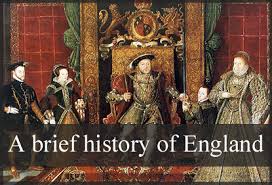Nennius in his “Historia Brittonvm” (9th Century,) associates that the Brythons (old Britons) utilized the Red Dragon as their icon while battling the Anglo-Saxons, some of whom used a White Dragon. In this tale, Myrddin (Merlin) takes care of to drug the two fighting dragons (one Red, the other White) who are terrorising Britain.
The Bayeux Tapestry reveals the White Dragon as Reddish in colour but this is possibly since the manufacturers of the Tapestry potentially desired to define it. The Saxons flew the White Dragon in 1066 at the Battle of Stamford Bridge and also the Battle of Hastings.
The White Dragon as well as the Sutton Hoo Helmet
When reconstructing the Sutton Hoo helmet the first an most evident feature was the White Dragon design which develop the nose item is the most evocative piece discovered at the famous Sutton Hoo interment pile. Dating from around 625 AD it is based on a Roman Parade helmet as well as resembles the safety helmets known from the Viking Vendel culture based in Sweden. It demonstrates how the original English individuals were of a mix of ethnic influences from Germany, Sweden, and also Denmark. It most likely belonged to Raedwald King of the East Angles from around 600 AD to 624 AD. He had solid ties with Sweden. The headgear is maintained in the British museum as well as is a haunting piece to take a look at up close. The head, tail and also wings are clear to see on the front of the helmet and also form a protective cross.
Beginnings of the White Dragon of the English
In very early medieval art, the dragon is represented as a winged snake, or worm. How did the winged fire breathing snake get in the world view of the very early Northern globe? The answer is found in the famous Viking Saga Beowulf. The vibrant summary of the dragon as a worm, appearing only at night when it is seen blazing via night skies cloaked in flame, and destined look for hoards in the ground flawlessly defines meteor strikes as well as shooting celebrities. It is a terrible, yet practical, interpretation of natural sensation. They saw a snake breathing flame flying throughout the evening sky. It plainly had wings if it was flying. Hardly ever, a daytime meteor strike was visible, and also word of its appearance would certainly make the rounds. At any time a meteor strike was tracked to ground, and the outcome of its fiery effect right into soft ground was checked out, presumably that the dragon had actually hidden itself deep underground. The Danish buried treasure underground. The dragons should do the very same. They come to ground to bury treasure heaps deep in the earth. They do not seem to go back to the surface area, considering that none are ever before seen emerging from their pits. They should stand guard over their heap, deep underground, in these undetected lairs. Any kind of guy who got in such an underworld would have to come to blows royal to swipe the dragon’s prize. This conventional sight of a connection with snakes, griffin, worms as well as dragons was brought from Scandinavia as well as inevitably to England. It is the reason that The English share so much folklore with the Nordic Vikings.
The Saxon War Song
by Sir Walter Scott (1771-1832) Whet the brilliant steel,
Boys of the White Dragon!
Kindle the torch,
Child of Hengist!
The steel glimmers except the sculpting of the reception,
It is hard, broad and sharp pointed;
The torch goeth not to the wedding chamber,
It steams and also flashes blue with sulpher.
Sharpen the steel, the raven croaks!
Light the torch, Zernebrock is yelling!
Stir the steel, sons of the Dragon!
Kindle the torch, daughter of Hengist!
The black clouds are reduced over the thane’s castle:
The eagle screams-he trips on their bosom.
Scream not, grey rider of the sable cloud,
Thy reception is ready!
The maidens of Valhalla look forth,
The race of Hengist will send them visitors.
Shake your black tresses, maidens of Valhalla!
And strike your loud timbrels for delight!
Several a swaggering step flexes to your halls,
Many a helmed head.
Dark sits the night after the thane’s castle,
The black clouds collect round;
Quickly shall they be red as the blood of the valiant!
The destroyer of forests shall tremble his red crest against them;
He, the bright customer of royal residences,
Broad waves he his scorching banner,
Red, wide, and dusky,
Over the strife of the valiant;
His joy is the clashing swords as well as busted bucklers;
He loves to lick the hissing blood as it ruptures warm from the wound!
All have to die!
The sword cleaveth the safety helmet;
The strong armour is pierced by the lance:
Fire devoureth the residence of princes,
Engines damage down the fencings of battle.
All must die!
The race of Hengist is gone-.
The name of Horsa disappears!
Shrink not then from your doom, children of the sword!
Allow your blades consume alcohol blood like wine;.
Banquet ye in the banquet of massacre,.
By the light of scorching halls!
Strong be your swords while your blood is warm.
As well as spare neither for pity nor anxiety,.
For vengeance hath yet a hr;.
Strong hate itself shall expire!
I likewise must die.

